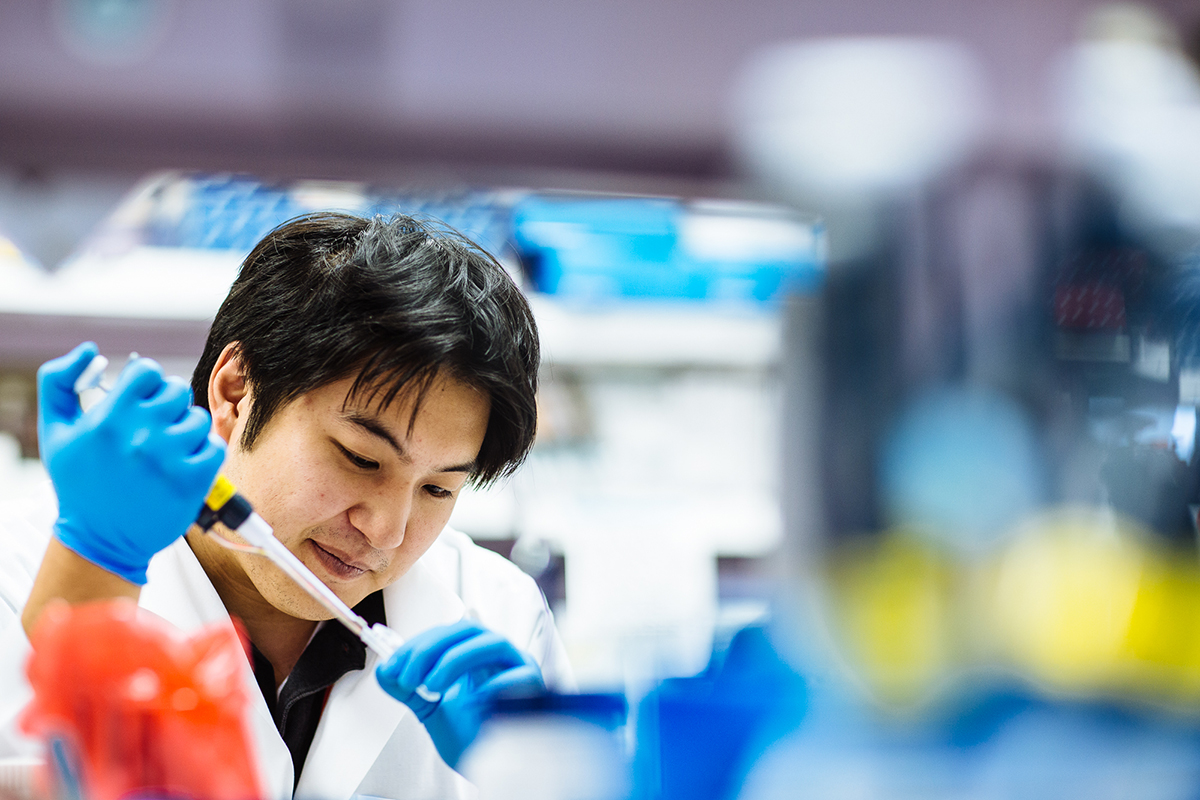Treatment
Pediatric Autologous Blood and Marrow Transplantation
What You Need to Know
Many patients come to the transplant(1) program at Children's National Hospital because of its excellent reputation in the field of pediatric Blood and Marrow Transplantation (BMT). Children's National patients have access to cutting-edge treatments through several clinical trials for blood and marrow transplantation. In addition, the Patient and Family Support Program provides comprehensive mental and psychosocial services and helpful resources for all patients treated in Children’s National's Cancer and Blood Disorders Center, as well as patients’ parents and siblings.
Although Children's National oncologists refer many autologous transplant patients, Children’s National's transplant program also works with oncologists at other hospitals in the region and across the country to provide the transplant-related portion of a patient's treatment. Once that part of the treatment is complete, patients return to the care of their oncologist for either further treatment or follow-up. The transplant doctors at Children’s National remain available to treat, or help the oncologist treat, any transplant-related complications.
Frequently Asked Questions
About Autologous Transplantation
What is an autologous blood and marrow transplantation?
What conditions are treated with autologous blood and marrow transplantations in children?
Treatment
Preparing for transplantation for a child
Transplanting stem cells for a child
Engraftment for a child
Complications or risks of transplantation for a child
1.) Transplant: A medical treatment to replace a recipient’s diseased organ or tissues with a healthy organ or tissue from a donor
2.) Donor: A volunteer (related or unrelated) who has donated stem cells for a patient
3.) Chemotherapy: Treatment for cancer using chemical substances designed to kill cancer cells. It is used in large doses to help destroy a patient’s diseased marrow in preparation for a marrow transplant
4.) Neuroblastoma: A solid tumor occurring in children which, in an advanced widespread stage, may be treated by autologous stem cell transplant
5.) Bone Marrow: The spongy center of bones that is the “factory” for all blood cells in circulation
6.) White Blood Cell: Also called a “leukocyte;” a type of blood cell produced by the bone marrow to help fight infection
7.) Engraftment: Successful transplantation of donor bone marrow cells into the patient. This is shown by the growth and differentiation of donor cells to achieve normal blood counts in the recipient
8.) Viruses: A type of germ that causes infections, most of which are not effectively treated with antibiotics. Examples: cytomegalovirus (CMV), herpes, varicella (chickenpox), adenovirus, hepatitis
9.) Veno-Occlusive Disease: A rare condition which may occur in the first few weeks after a hematopoietic stem cell transplant (HSCT); caused by obstruction in the liver veins due to damage from chemotherapy and radiation
10.) Platelet: A component of the blood important in clotting. Inadequate amounts of platelets will lead to bleeding and bruising easily
11.) Red Blood Cell: type of blood cell made in the bone marrow that carries oxygen to all parts of the body
Meet the Providers Who Offer Autologous Blood and Marrow Transplantation
Departments that Offer Autologous Blood and Marrow Transplantation

Blood and Marrow Transplantation
Our program is one of the only dedicated pediatric bone marrow transplant programs in the region. We offer advanced treatments for children with leukemia and blood disorders like sickle cell disease. Learn more about this program.

Help Kids and Make a Difference
Invest in future cures for some of life's most devastating diseases. Give today to help more children grow up stronger.








